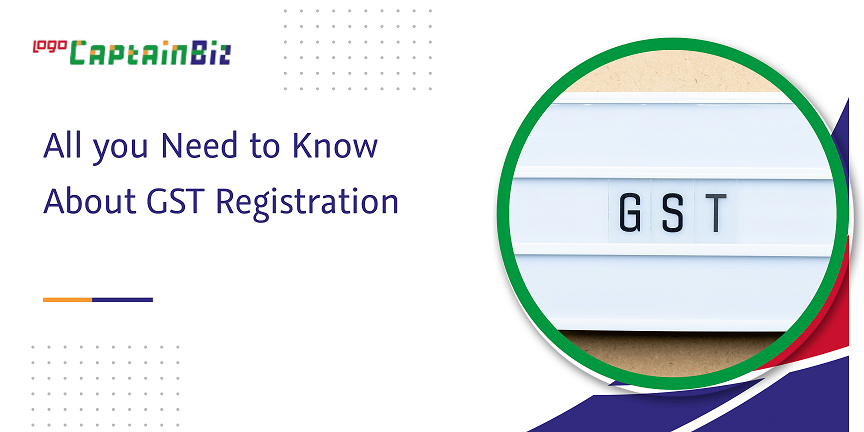Step-by-Step Refine for Singapore GST Registration Explained
Step-by-Step Refine for Singapore GST Registration Explained
Blog Article
The Ultimate Guide to Streamlining the GST Registration Process and Needs for Small Service Owners

Understanding GST Essentials
To comprehend the principles of the Product and Services Tax Obligation (GST) system, small company owners have to first comprehend its underlying effects and concepts. Under the GST routine, services are needed to sign up and gather tax obligation on part of the federal government, making certain openness and conformity.
Among the crucial principles of GST is input tax obligation credit score, which enables organizations to assert credit for tax obligations paid on their acquisitions. This mechanism protects against the plunging result of tax obligations and advertises effectiveness in the tax obligation system. Furthermore, GST is a destination-based tax, suggesting that the tax obligation is imposed at the factor of consumption as opposed to the point of beginning. This makes certain reasonable distribution of tax obligation earnings among states based upon where the services or items are consumed. Comprehending these basic principles is critical for little business proprietors to browse the intricacies of the GST system and ensure conformity with the law.
Qualification Standards for Enrollment
Having established a fundamental understanding of GST principles, tiny organization proprietors need to now fulfill certain qualification criteria to proceed with the registration process (Singapore GST Registration). Companies that were signed up under the previous tax regime (BARREL, service tax, and so on) are also mandated to sign up under GST. Farming companies that only supply generate out of key manufacturing are excluded from GST enrollment.
Documents Needed for GST Enrollment

Simplified Enrollment Refine Actions
Adhering to the collection and verification of the requisite papers, the enrollment process for GST can be browsed with a series of simplified actions developed to promote reliable conformity for little company proprietors. The very first step involves seeing the GST portal and selecting the 'New Registration' choice. Subsequently, the applicant needs to complete Part A of the GST REG-01 form with details such as PAN, mobile number, and email address to obtain an OTP for verification. Once the OTP is obtained and gotten in, a Short-lived Recommendation Number (TRN) is created for more process. The next step calls for filling up out Component B of the kind with essential business details, posting supporting files, and completing the confirmation process utilizing DSC or EVC. Finally, upon successful confirmation, an Application Referral Number (ARN) is provided, suggesting the completion of the GST enrollment process. By adhering to these simplified actions, small company proprietors can effectively register for GST and make certain compliance with tax obligation laws.
Tips for Ensuring Conformity
To maintain governing adherence and functional integrity, persistent oversight and proactive measures are critical in making certain compliance with GST needs for Clicking Here small company proprietors. Local business owners should stay upgraded with GST regulations, submitting target dates, and any kind of changes in tax rates to stay clear of charges and keep a good standing with tax obligation authorities. One crucial idea for compliance is to keep accurate and in-depth documents of all purchases, including invoices, expenses, and invoices related to GST. Frequently integrating economic records with GST returns can help in recognizing and remedying any kind of discrepancies quickly. In addition, carrying out regular interior audits or looking for specialist aid can make sure that business is complying with all GST policies properly. It is additionally crucial for tiny organization owners to buy GST-compliant accounting software application that can streamline the tax filing process and reduce mistakes. Attending GST awareness workshops or training programs can improve understanding and compliance with GST laws, eventually profiting the company in the long run.
Verdict
To conclude, tiny business owners must comprehend the essentials of GST, satisfy the qualification criteria, gather required documents, and adhere to the simplified enrollment process steps to ensure compliance. By simplifying the GST enrollment procedure and visit site requirements, local business owners can prevent penalties and operate their services efficiently within the lawful structure - Singapore GST Registration. It is critical for local business proprietors to stay certified and enlightened with GST guidelines to keep an effective business operation
Small organization proprietors looking for GST registration have to guarantee they collect and submit the necessary records to complete the enrollment procedure efficiently. The documents required for GST enrollment generally include proof of service registration or unification, FRYING PAN (Long-term Account Number) card of the business address, entity and identification proof of the promoters/partners/directors, photos, address proof of the place of organization, financial institution account statements or canceled cheques, and permission forms. Participating in GST understanding workshops or training programs can boost understanding and compliance with GST policies, inevitably benefiting the organization in the lengthy run.
By simplifying the GST enrollment process and requirements, little company proprietors can stay clear of charges and run their businesses smoothly within the lawful framework. It is important for small organization owners to stay compliant and enlightened with GST policies to maintain a successful organization procedure.
Report this page